Many snakes will eat eggs in the wild if they get the opportunity. Some snakes can consume large eggs, the same as they can eat lizards, birds, and large rodents. While some snakes may enjoy eggs, they can be harmful to others.
Continue reading to find out about the 17 snakes that eat eggs.
Table of Contents
Can Snakes Eat Eggs?
Some snakes will gladly eat and enjoy an egg or two in the wild, while others eat only eggs. The eggs can be from birds, reptiles, insects, or fish. The snakes will use their flexible jaw to open their mouth wide enough to take in the egg.
They crack the egg by pressing it against their vertebrae bones, drinking the contents. They often regurgitate the shell. While not all snakes will eat eggs, some live only on eggs.
Some will eat chicken eggs and reduce yield in those farming chickens. It is not unusual for the snakes to also enjoy a chicken or two. They are known to develop quite an appetite for chickens.
Can I Feed My Pet Snake Eggs?
Most snake species can eat an egg safely as part of their regular diet. Some will eat an all-egg diet and others can have it incorporated. Then there are those that should never eat eggs, as they are not able to digest them.
Pythons, boas, and rattlesnakes should never be given an egg as part of their diet. They are carnivorous snakes and need alive or recently killed animals as their primary diet.
It is important to know what your pet snake can and cannot eat, before trying to add an egg into its diet.
17 Examples of Snakes That Eat Eggs
The 17 snakes that eat eggs include:
1. East African Egg-eater
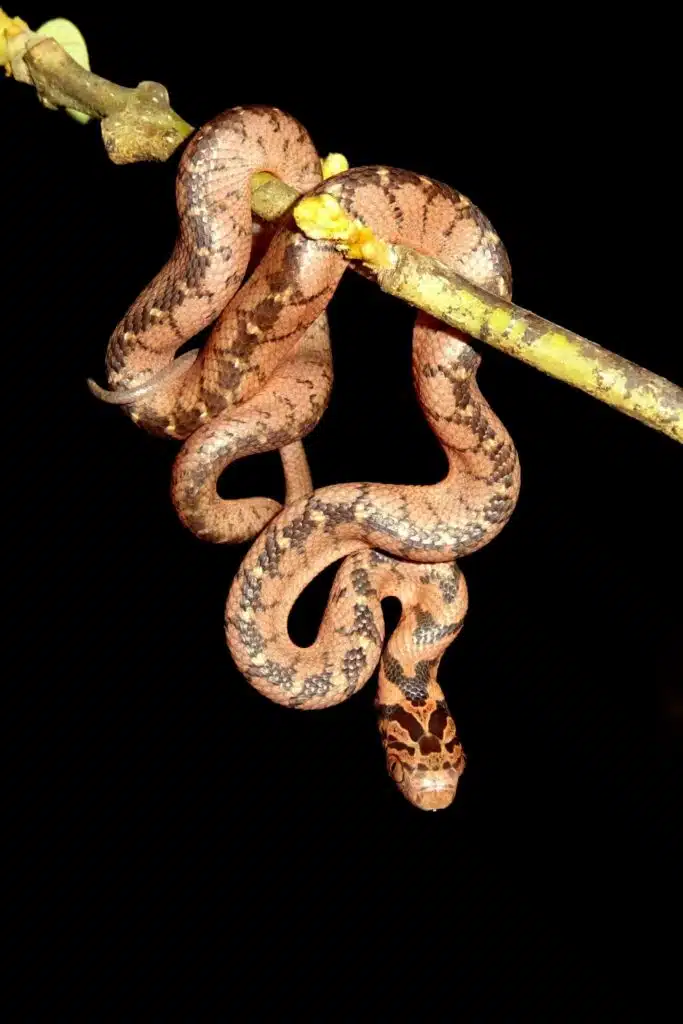
Scientific name: Dasypeltis medici.
Common name: East African egg-eater, eastern forest egg-eater.
The East African egg-eater is also known as the Eastern forest egg-eater and is a non-venomous snake, endemic to Africa. This snake is common in South Africa, Kenya, Mozambique, Malawi, Swaziland, Zimbabwe, Zambia, and Tanzania.
They are mostly found in lowland evergreen forests. Females are longer than the males, growing to 76cm, with males growing to 60cm.
This snake species feeds only on birds’ eggs. They can swallow eggs that are more than three times the size of their heads.
2. Corn Snake
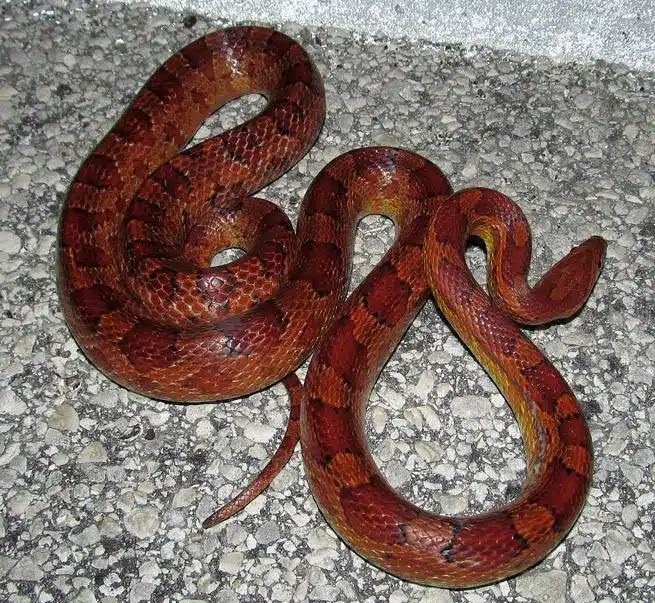
Scientific name: Pantherophis guttatus.
Common name: Corn snake.
The corn snake is a North American rat snake that captures and subdues its prey through constriction. It is common in central and southeastern United States and is a popular pet. They superficially look like the copperhead, a venomous snake, which often results in them being killed by mistake.
Corn snakes are harmless to humans and beneficial, they control wild rodent pests that spread disease and destroy crops. These snakes can grow to almost six feet n length. They are slender, have bright colors, and round pupils.
As with all snakes, the corn snake is a carnivore. They eat every few days on small rodents and reptiles. They are known to climb trees where they eat the unguarded bird’s eggs.
3. Western Rat Snake
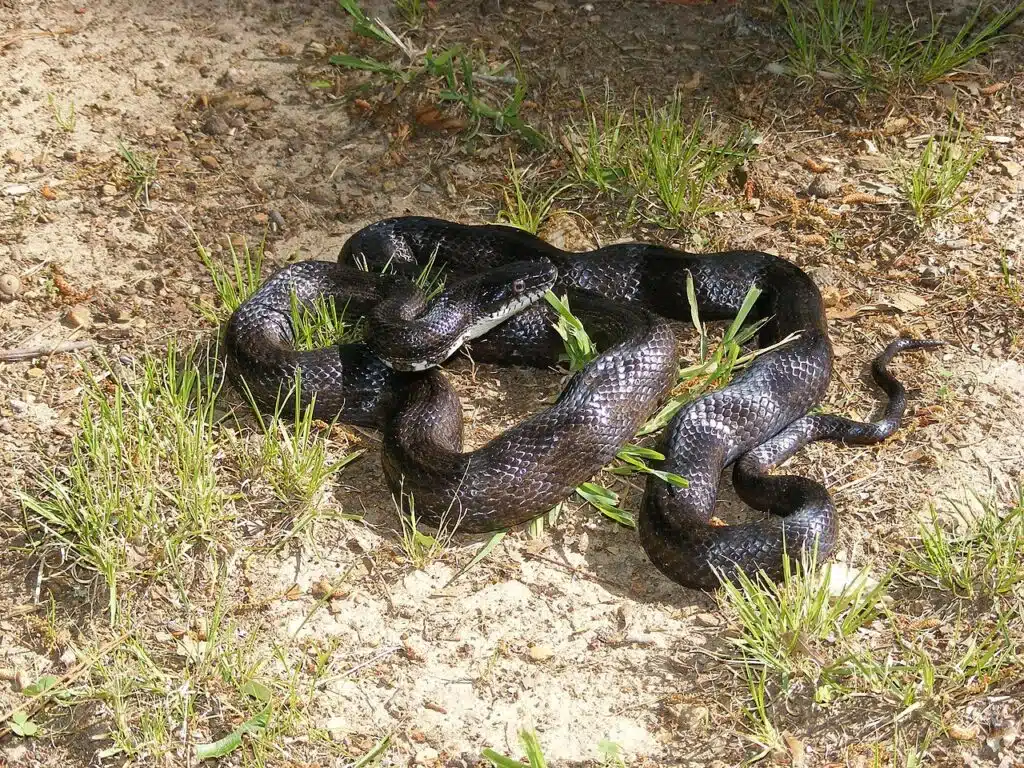
Scientific name: Pantherophis obsoletus.
Common name: western rat snake, black rat snake, pilot black snake, black snake.
The Western rat snake, also known as the black snake, is non-venomous. They are common in North America from the west of the Mississippi River to southern Iowa and western Louisiana to Kansas and Nebraska.
These snakes live in a range of habitats. They are excellent at climbing and will spend time in trees. They have also been found in flat farmlands and rocky hillsides.
They are relatively large snakes, growing to six feet in length, and can weigh up to one kilogram. They squeeze their prey to a point where the prey has a cardiovascular collapse.
They eat mostly rats and mice, but they will consume any small vertebrate they can catch, including their own species, rabbits, squirrels, and chipmunks. They are also known to eat birds’ eggs, especially those from cavity-nesting birds.
4. Amur Rat Snake
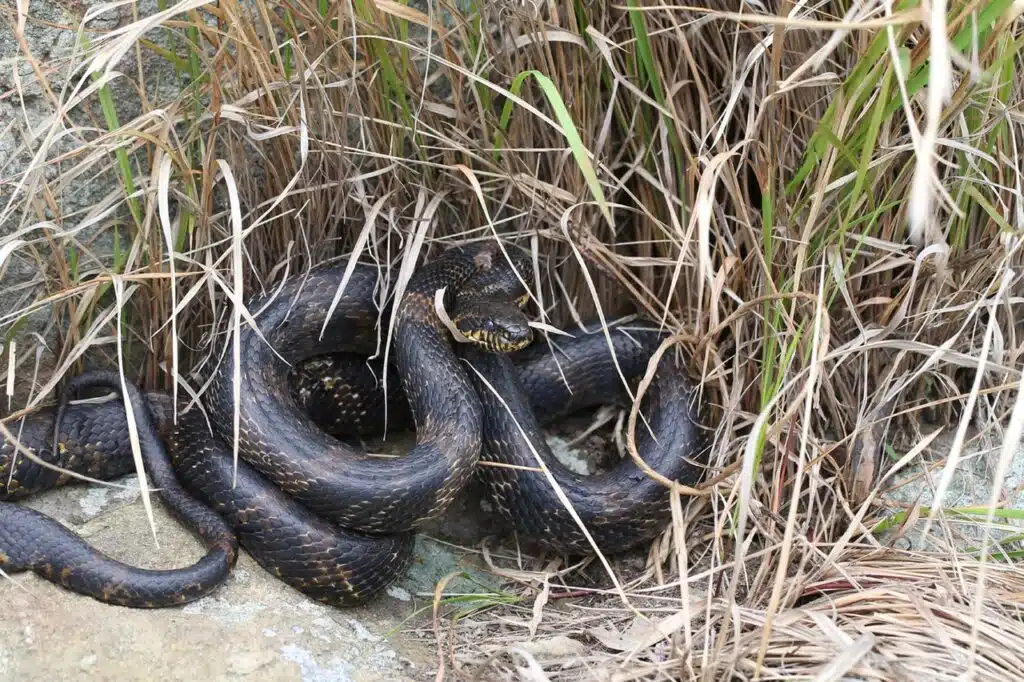
Scientific name: Elaphe schrenckii.
Common name: Amur rat snake, Manchurian black racer, Manchurian black water snake, Russian rat snake, Schrenck’s rat snake, Siberian rat snake.
The amur rat snake is a non-venomous snake that is indigenous to Northeast Asia. It is on the China Species Red List as Vulnerable and is a protected species in South Korea and Russia.
This species prefers forest clearings, farmlands, and scrubs, where they hide in tree cavities, wood and stone piles and will flee into the water or up a tree if disturbed. They have been observed as high as twenty feet up a tree.
The Amur rat snake can grow to just shy of six feet and is a large and robust rat snake. They vary from dark brown to cream saddles. Their primary diet is birds eggs, small mammals, and birds. They are excellent swimmers and fantastic climbers, enabling them to capture just about any prey that fits into their mouth.
5. Central African Egg-eating Snake
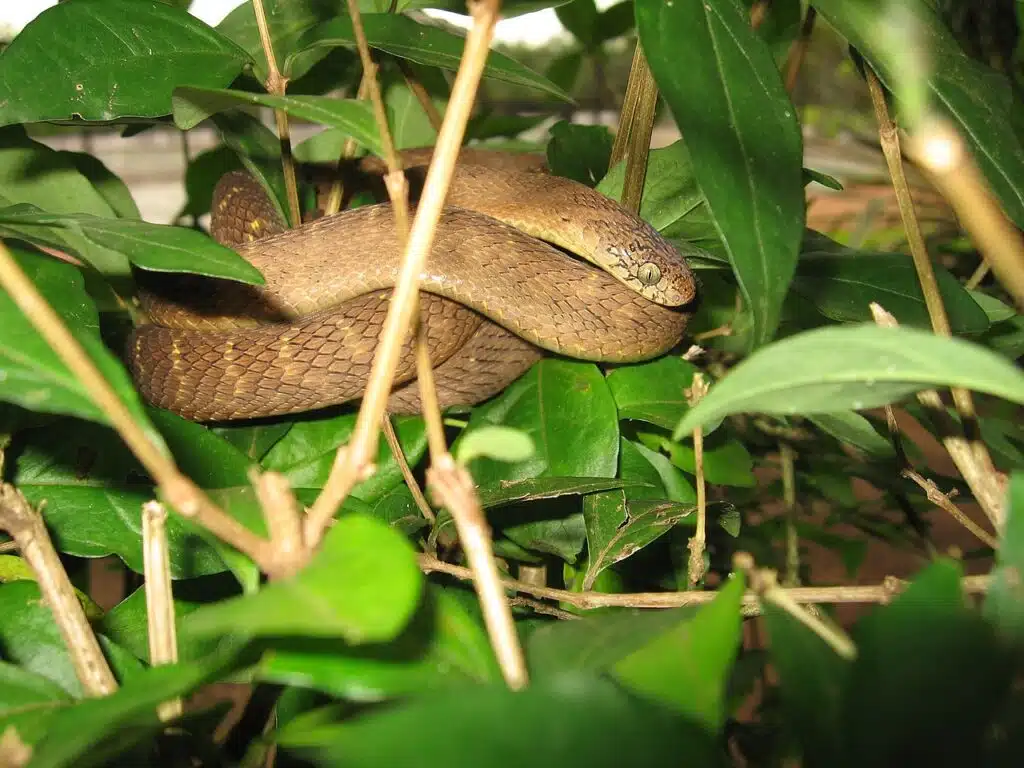
Scientific name: Dasypeltis fasciata.
Common name: Central African egg-eating snake, western forest eggeater.
The central African egg-eating snake, also known as the Western forest egg eater is endemic to Africa. They are sometimes kept as pets. These snakes can be found in western and central Africa from the Gambia to Uganda.
They are often observed in lowland forests where they prefer being in trees, where they can prey on bird nests. Being nocturnal, they can surprise their bird preys, who are sleeping at the time or have left their eggs unguarded.
These snakes have lost their teeth over the years, enabling them to consume eggs whole. Once the egg is in the neck, there are bony projections that crush the egg. The snake drinks the contents and the shell is regurgitated.
These snakes eat newly laid eggs and cannot swallow or eat an egg with an embryo.
6. Great Basin Rattlesnake
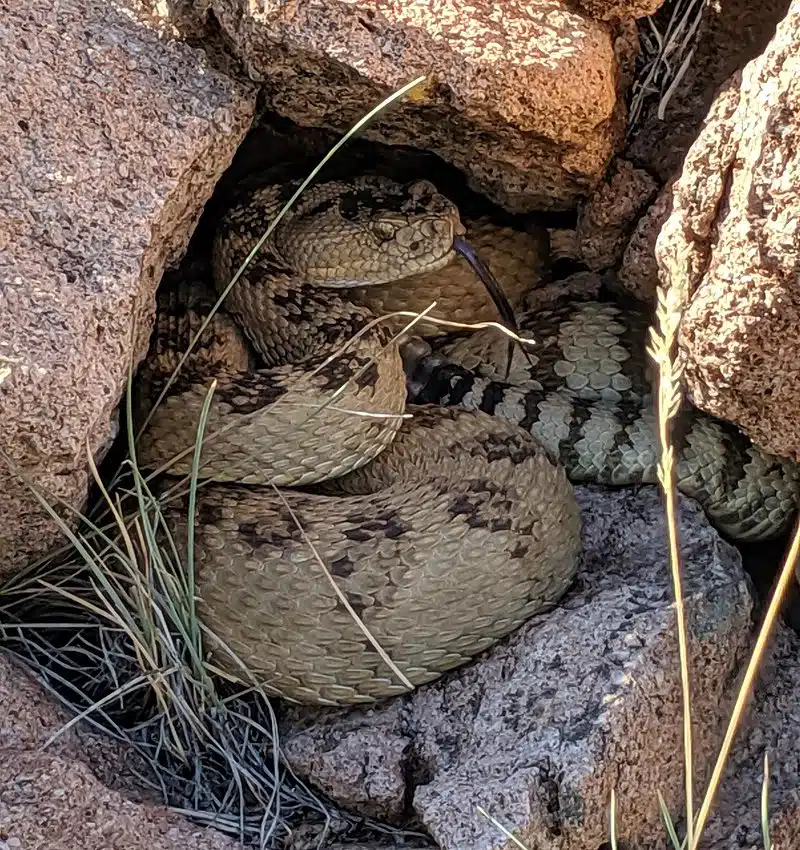
Scientific name: Crotalus lutosus.
Common name: Great Basin rattlesnake.
The Great Basin rattlesnake is a venomous pit viper found in the Great Basin region in the United States. They can grow to 121cm in length with males being longer than the female.
These pale gray, olive-brown, or yellow-brown snakes have dorsal blotches to help identify them. They eat a varied diet of amphibians, reptiles, birds, mammals, and bird eggs. Unlike many of the other rattlesnakes, which cannot eat eggs, this snake enjoys bird eggs as part of its regular diet.
7. Kukri Snakes
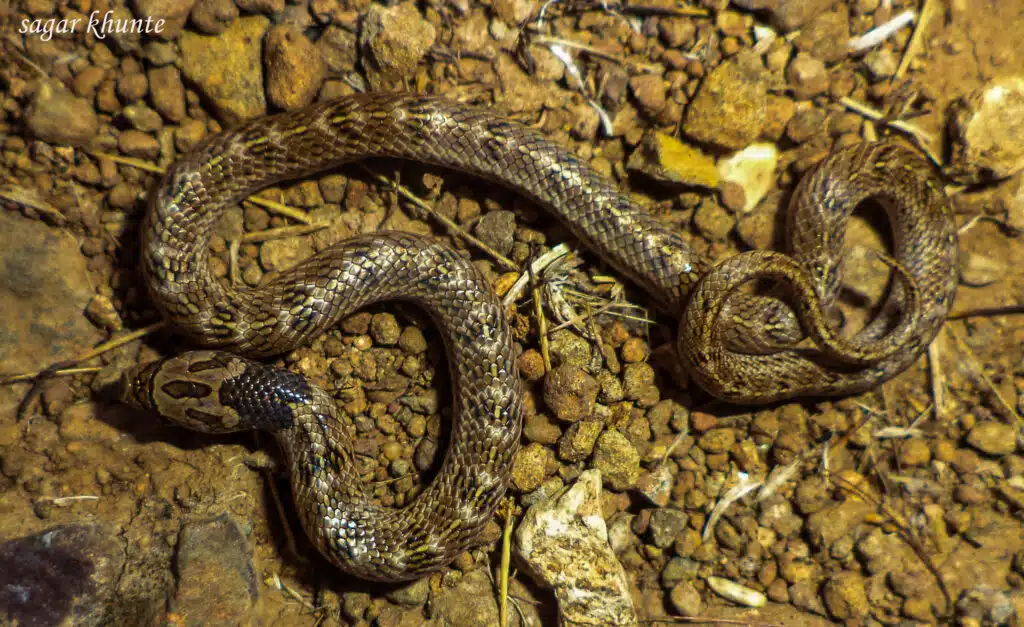
Scientific name: genus Oligodon.
Common name: kukri snakes.
The Kukri snake was first described in 1826 and is widespread through tropical and central Asia. These egg-eating snakes grow to around ninety centimeters with a variety of colors and patterns.
They are scavengers, living on the eggs from reptiles and birds. Their diet also comprises lizards, small rodents, and fronts. They are rear-fanged with enlarged teeth.
They are not considered dangerous to humans.
8. Common Egg Eater
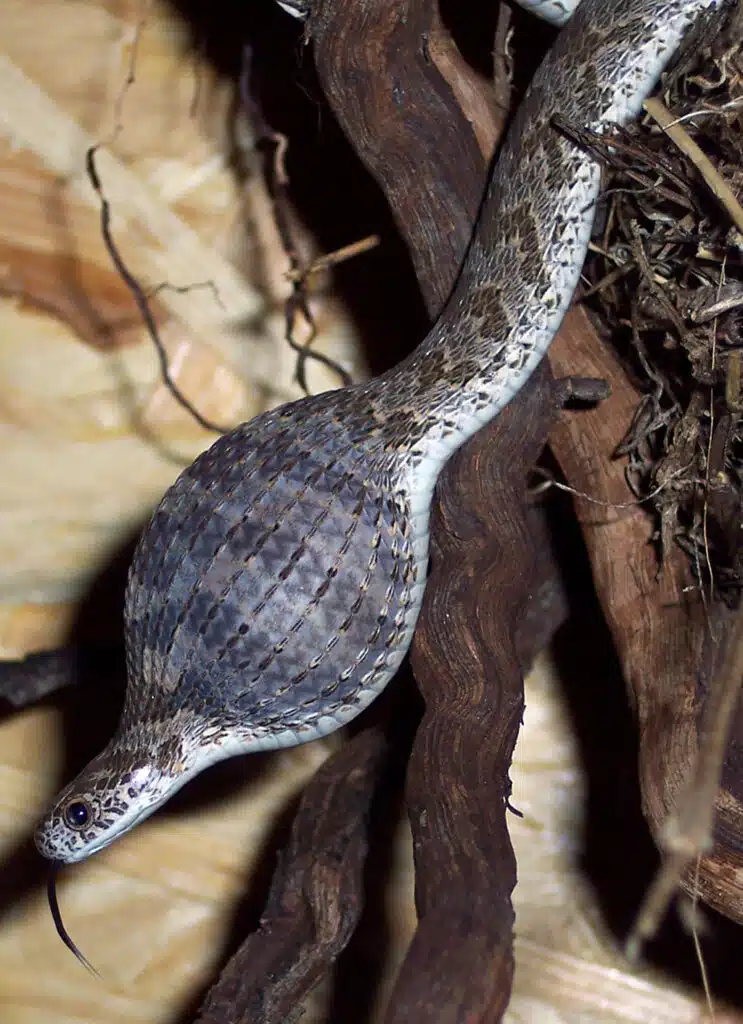
Scientific name: Dasypeltis scabra.
Common name: common egg eater, egg-eating snake, rhombic egg eater.
The common egg eater is a non-venomous snake from Africa. It can be found in sub-Saharan Africa, Saudi Arabia, and the Middle East. These snakes grow to 120cm in length with a toothless jaw.
There are dark brown spots on a light background with a V shape on the back of the neck. They live in a host of habitats, except true deserts and canopy forests. These nocturnal snakes are excellent climbs and can climb rock outcrops and trees to find bird nests.
The common egg eater eats only eggs. They have small ridges in the mouth, which helps them rasp the eggshell. They swallow the egg whole, which is then punctured and the liquid is enjoyed, while the shell is regurgitated in one piece.
9. Indigo Snake
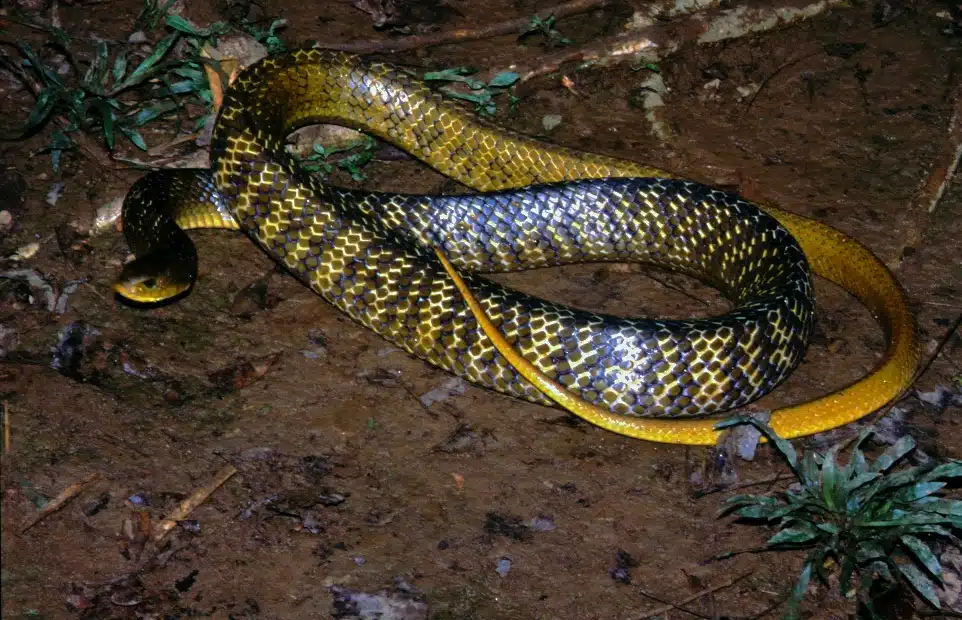
Scientific name: Drymarchon corais.
Common name: indigo snake.
Indigo snakes are non-venomous snakes found in South America from Brazil to Peru and Venezuela. This snake species forages on the ground, climbing low vegetation.
Their diet comprises fish, reptiles, mammals, frogs, and bird eggs.
10. Taiwanese Tree Snake

Scientific name: Boiga kraepelini.
Common name: square-headed cat snake, Kelung cat snake, Taiwanese tree snake.
The Taiwanese tree snake is a square-headed cat snake that is considered mildly venomous to humans. They are endemic to East and Southeast Asia.
These long and thin snakes can grow to 10cm in length. They have a large heads with large eyes with cat-like pupils. They are amber to brown in color with brown to black colored cross bands.
They are an aggressive species that will coil up and strike when threatened. They are found in forest habitats, usually not too far from a village.
Being nocturnal, they prefer hunting in trees, though some do come down to the ground level when hunting. Their diet comprises lizards, small birds, and the occasional bird egg.
11. Rough Earth Snake
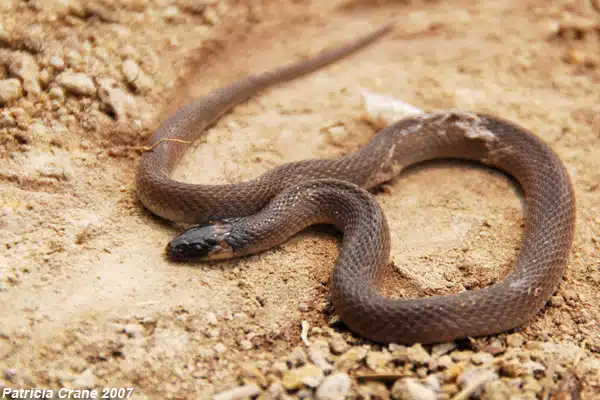
Scientific name: Haldea striatula.
Common name: Rough earth snake.
Rough earth snakes are venomous snakes, common in the Southeastern United States. These small and harmless snakes grow to 25cm in length. They are slender and secretive with round pupils and keeled dorsal scales.
These snakes are red, gray, or brown without any pattern, the females are also heavier and longer than the males. The rough earth snake hides under rocks, logs, and ornamental stones in compost piles, gardens, and leaf litter. They are also found in forested areas with ample ground cover.
Their diet comprises earthworms, snails, larvae, slugs, sowbugs, and insect eggs.
12. Puffing Snake
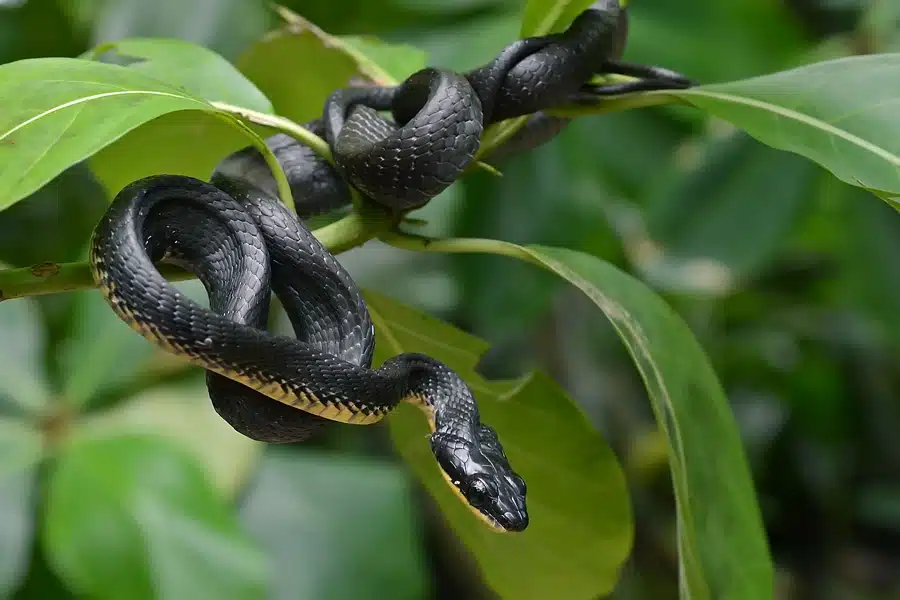
Scientific name: Phrynonax poecilonotus.
Common name: puffing snake, bird snake.
The puffing snake is a non-venomous snake endemic to the New World. It is found from Mexico through Central America to Trinidad and Tobago, northern and central South America. These snakes eat terrestrial vertebrates, they are well known for eating bird’s eggs.
These snakes are dull in color, but as they age and molt, they change from a slate gray to yellow and orange.
13. Indian Egg-eating Snake

Scientific name: Elachistodon westermanni.
Common name: Indian egg-eating snake, Indian egg-eater, Westermann’s snake.
The Indian egg-eating snake is a rare egg eater that is endemic to the Indian subcontinent. They prefer living in forests and shrublands.
This is a glossy brown to black colored snake with white areas and a cream stripe, which runs from the neck to the tip of the tail. Their heads are brown with a black arrow marking. They can grow to 78cm.
The Indian egg eater is a nocturnal snake and can scale vegetation with ease. Their diet comprises exclusively of bird’s eggs, without any embryonic growth. Their vertebrae help in cracking the egg, where they eat the contents and regurgitate the shell.
14. Turtleheaded Sea Snake

Scientific name: Emydocephalus annulatus.
Common name: turtleheaded sea snake, egg-eating sea snake.
The turtle-headed sea snake is an egg-eating sea snake that is found in Oceania, close to Australia, the Philippines, and New Caledonia. These snakes have short, blunt heads and are medium in size. They are very slender with varying colors. They can grow to 103cm in length.
The snake’s color is determined by how much algae has grown on the body. Darker snakes have more algae build-up than those that are paler in color or pattern.
The turtle-headed sea snake feeds on immobile and demersal fish eggs. These are the eggs of gobies, blennies and damselfish.
15. Golden Sea Snake
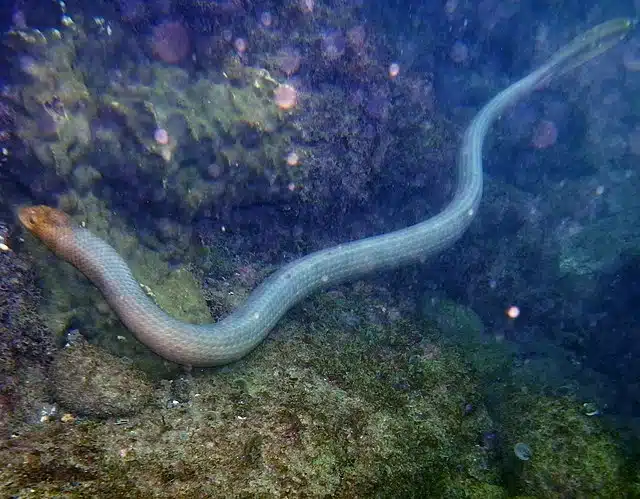
Scientific name: Aipysurus laevis.
Common name: golden sea snake, olive sea snake, olive-brown sea snake.
The golden sea snake is a thick and large-bodied snake with varied patterns. The Eastern golden sea snakes are dark gray mottled with a darker head, north and west snakes are light gray with light gray scales on a dark back. Both have an olive to brown colored head.
They are known to grow to 200cm in sea temperatures up to 31.4°C and depths of up to sixty-eight meters. They hide in coral reefs and caves, where they feed on fish, crustaceans, and fish eggs.
16. Golden Tree Snake
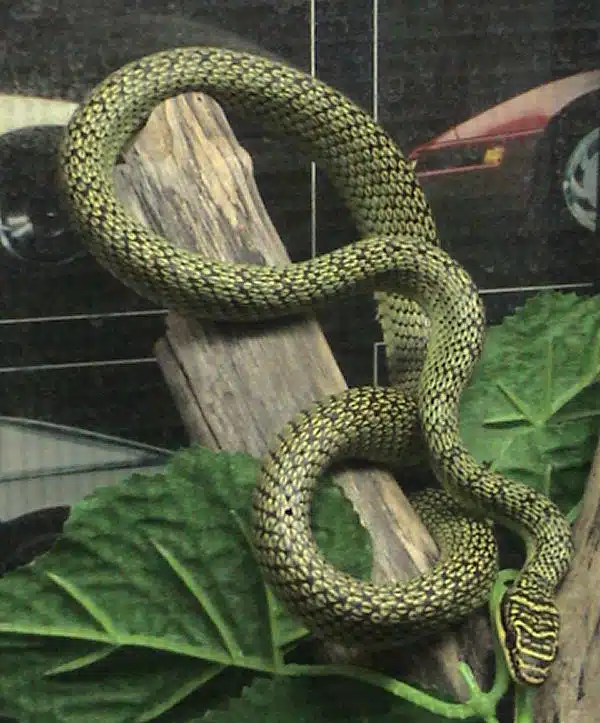
Scientific name: Chrysopelea ornata.
Common name: golden tree snake, ornate flying snake, golden flying snake.
Golden tree snakes are found in South and Southeast Asia. They are rear-fanged snakes with striking looks. They are green with black cross-hatching with yellow or gold accents.
They have a slender body and a flattened head with a blunt nose. They can grow to 130cm in length.
In Sri Lanka, these snakes are green/yellow to pale green in color with dark crossbands. Some have flower-shaped red or orange spots. In Southeast Asia, they do not have flower-shaped spots and the crossbars are less prominent.
These snakes are mildly venomous. They are fast-moving and tend to prey on lizards, small rodents, and bats, they are also known to feed on insect and bird eggs.
17. Yellow-faced Whip Snake
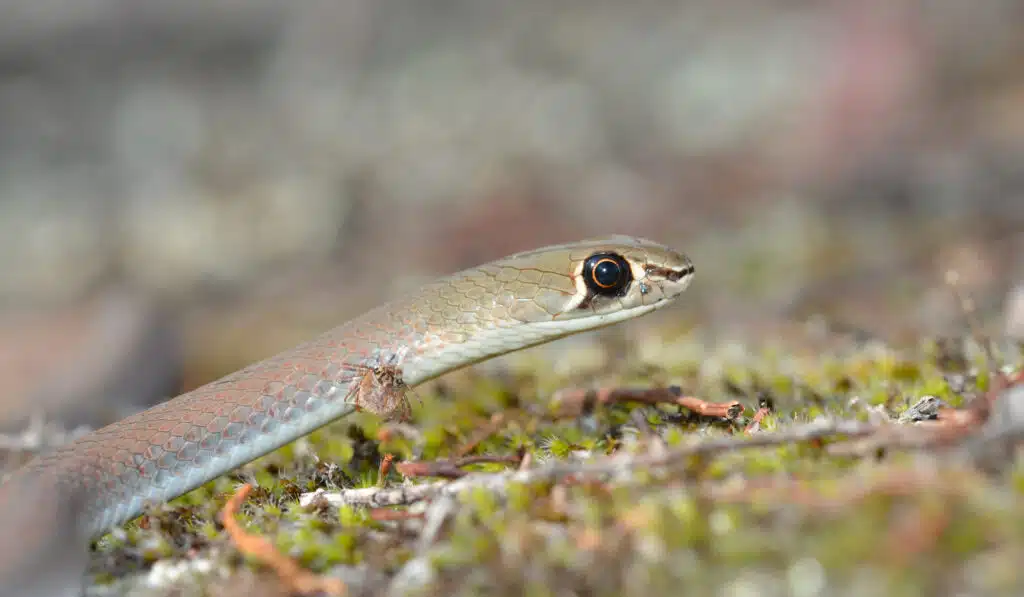
Scientific name: Demansia psammophis.
Common name: Yellow-faced whipsnake.
The yellow-faced whip snake is a venomous snake in Australia that can be found o the coat or in scrublands. They are long and thin snakes with narrow heads that grow to around one meter in length.
Their narrow yellow head with a pale ring around the eyes helps with identification. Their body color ranges from gray to brown, olive green and some even have a reddish coloration.
Their diet comprises lizards that are out during the day. Lizards are their main source of food, along with lizard eggs. They are known to forage at night, even though they are not nocturnal, which enables them to catch frogs and geckos.
Further Reading: